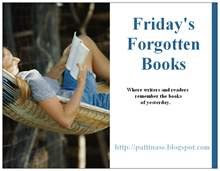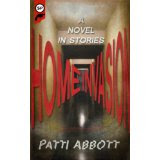How I came to write Li'l Tom and the Pussyfoot Detective Bureau: The Case of the Parrots Desaparecidos
by Angela Crider Neary
My first novella, Li'l Tom and the Pussyfoot Detective Bureau: The a Case of the Parrots Desaparecidos, is a cat detective mystery set in the streets of San Francisco. Li’l Tom fancies himself to be the Sam Spade of cats and prides himself on always getting his man. He was the runt of his litter, so this may sometimes hinder his investigations but he strives to use his size to his advantage. Li'l Tom is by no means perfect, however, and sometimes finds himself drowning his sorrows at the milk bar or over-imbibing in catnip tea, not to mention jealously vying with a hulking, muscular witness in his case for the affections of his Calico crush. When some of the wild parrots of Telegraph Hill disappear, Li’l Tom is hired to take the case. With the help of his lovely sidekick Calico cat, a homeless rat, and an unbalanced Chiweenie dog, he sets out to rescue the exotic parrots. But will they get there before it’s too late?
So what inspired me to write a book about a cat detective? I grew up reading mystery and detective stories, most likely starting with Nancy Drew, as many girls do, so that explains some of it. I am also an ardent cat enthusiast (okay, fanatic), so that is another part of it. But the main catalyst was my interest in stories where the setting, usually a city, is so mysterious or compelling that it almost becomes one of the characters in the stories. I feel that San Francisco, with its iconic landmarks and its history in the Gold Rush, the Barbary Coast, the Summer of Love, the Beat Generation, and arts and literature is one of those places.
My husband and I moved to San Francisco in 2008, and a couple of
our favorite places to explore in the city became the North Beach and
Telegraph Hill areas. Telegraph Hill has about 400 steep steps leading
up to the top where Coit Tower is nestled. Every
once in a while, we would make the trek over these steps from the
Embarcadero side over onto the North Beach side. It’s kind of like
walking through an urban rain forest with all the flowers, plants, and
trees. In all the foliage and nooks and crannies of
the houses that are built up the side of the hill, we would often see
cats hidden away and watching us. For some reason, that’s the only
place in the city we would see cats - maybe they stay inside in most
areas of the city. At the same time, I became fascinated
with the wild parrots of Telegraph Hill. These red-crowned conures have
been in the city for decades and are said to have evolved from pet
parrots, originally from South America, who escaped. When I go to work
at my day job, I walk by trees where the parrots
sleep. I start work early at around 7:30 a.m., and the parrots are just
waking up and beginning their cacophonous squawking. This is one of
the things I love most about San Francisco. Out of these experiences,
Li'l Tom, cat sleuth, was born. The story incorporates
many of my favorite things about San Francisco, so it is meant to be
enjoyed by lovers of animals and of San Francisco, alike.
To learn more about Li'l Tom and Angela Crider Neary, visit them on Facebook: https://www.facebook.com/Angela-Crider-Nearys-Author-Page-468613679953974/?ref=hl or Amazon: http://www.amazon.com/Angela-Crider-Neary/e/B00TTEFOR2/ref=sr_ntt_srch_lnk_1?qid=1445808992&sr=8-1.
To learn more about Li'l Tom and Angela Crider Neary, visit them on Facebook: https://www.facebook.com/Angela-Crider-Nearys-Author-Page-468613679953974/?ref=hl or Amazon: http://www.amazon.com/Angela-Crider-Neary/e/B00TTEFOR2/ref=sr_ntt_srch_lnk_1?qid=1445808992&sr=8-1.



































